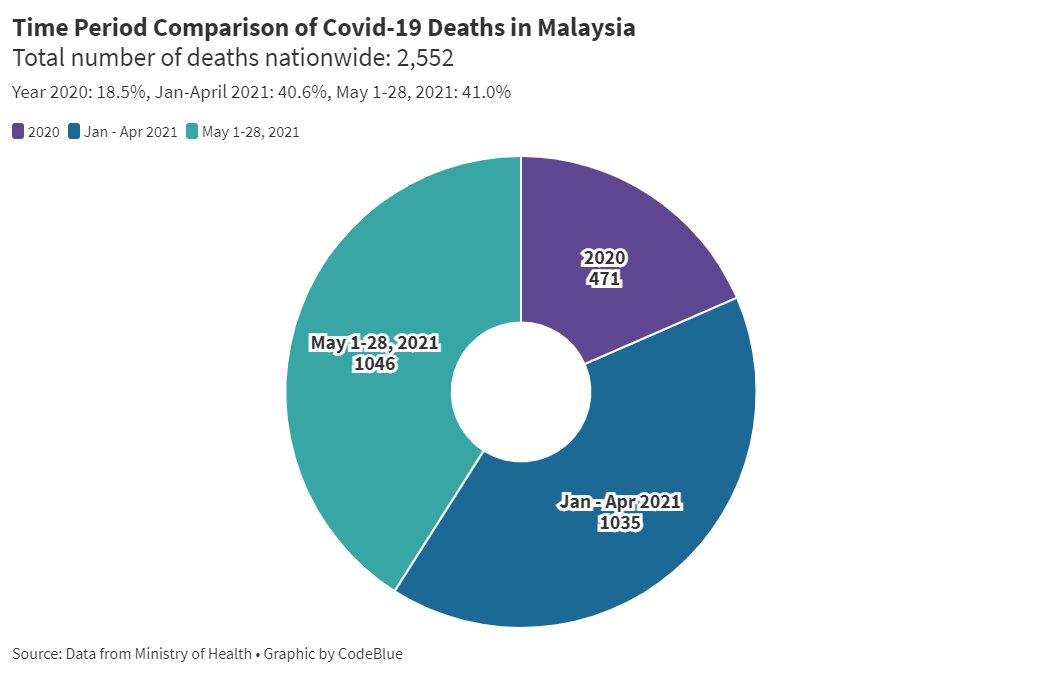
Malaysia's 1,046 Covid-19 Deaths In May Double 2020 Toll
1,046 Covid-19 fatalities were reported in less than a month from May 1-28 this year, more than twice the 471 deaths recorded in the whole of 2020.
codeblue.galencentre.org/2021/05/28/mal…
1,046 Covid-19 fatalities were reported in less than a month from May 1-28 this year, more than twice the 471 deaths recorded in the whole of 2020.
codeblue.galencentre.org/2021/05/28/mal…
The highest daily number of coronavirus-linked deaths nationwide since the epidemic hit Malaysia in Jan 2020 was 63 deaths on May 26, with Selangor reporting 24 deaths, the highest in the country. 

Malaysia reported 1,046 Covid-19 deaths from May 1-28 this year.
Top 5 states:
Selangor - 328 deaths
Johor - 132 deaths
KL - 110 deaths
Sarawak - 98 deaths
Kelantan - 74 deaths
Top 5 states:
Selangor - 328 deaths
Johor - 132 deaths
KL - 110 deaths
Sarawak - 98 deaths
Kelantan - 74 deaths

Cumulative Covid-19 deaths in Malaysia as of May 28 this year: 2,552
May 1-28, 2021: 1,046 deaths (41%)
Jan - Apr 2021: 1,035 deaths (40.6%)
The whole of 2020: 471 deaths (18.5%)
May 1-28, 2021: 1,046 deaths (41%)
Jan - Apr 2021: 1,035 deaths (40.6%)
The whole of 2020: 471 deaths (18.5%)

About one in 10 Covid-19 fatalities reported from May 1-28 this year were brought in dead (died before seeking medical treatment).
BID cases comprised 99 of 1,046 Covid-19 fatalities (9.5%) reported in that period.
10 BID cases were reported on May 22, the highest daily rate.
BID cases comprised 99 of 1,046 Covid-19 fatalities (9.5%) reported in that period.
10 BID cases were reported on May 22, the highest daily rate.

More than four in 10 people who died from Covid-19 from May 1-28 this year perished in the Klang Valley that reported 439 fatalities, or 42% of 1,046 nationwide deaths.
Selangor: 328 deaths
KL: 110 deaths
Putrajaya: 1 death
Selangor: 328 deaths
KL: 110 deaths
Putrajaya: 1 death

• • •
Missing some Tweet in this thread? You can try to
force a refresh







